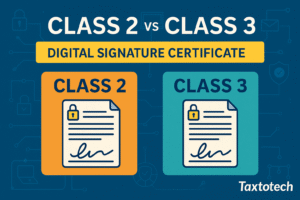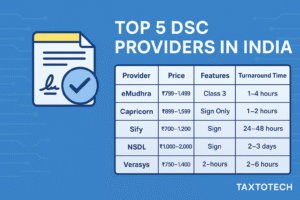Tax planning has always been a complex dance between compliance and optimization. For businesses and individuals alike, the goal is to legally minimize tax liabilities, but achieving this requires navigating intricate tax codes, anticipating future changes, and meticulously analyzing financial data. Traditionally, this process has been heavily reliant on human expertise, often leading to missed opportunities or sub-optimal outcomes due especially to the sheer volume and dynamic nature of financial information.
However, the landscape of tax planning is undergoing a revolutionary shift. Artificial Intelligence (AI) is emerging as a game-changer, transforming how tax professionals and taxpayers approach financial optimization. At Taxtotech, we believe that understanding AI in tax planning is no longer just an advantage, but a necessity for optimizing strategies for maximum savings. AI’s ability to process vast datasets, identify intricate patterns, and run complex simulations offers unprecedented opportunities to uncover efficiencies and make more informed decisions. Let’s delve into how AI is empowering smarter, more effective tax planning.
The Traditional Hurdles of Tax Planning
Before AI, tax planning faced several inherent limitations:
- Data Overload: Modern businesses generate enormous volumes of financial data from various sources (ERPs, payroll, sales, investments). Manually sifting through this to identify tax-relevant information is time-consuming and prone to error.
- Complexity of Tax Laws: Tax codes are notoriously complex, constantly changing, and vary significantly across jurisdictions. Keeping up with every nuance is a monumental task.
- Limited Scenario Modeling: Human capacity to model numerous “what-if” scenarios (e.g., impact of a new investment, a change in business structure, or a different retirement contribution) is limited by time and computational power.
- Reactive Approach: Often, tax planning was a year-end exercise, reacting to events that had already occurred, rather than proactively shaping financial decisions.
- Missed Opportunities: Without comprehensive analysis, businesses and individuals frequently overlook legitimate deductions, credits, or advantageous structuring options.
- Human Bias & Error: Even the most skilled tax professionals can make mistakes or be influenced by cognitive biases, leading to less-than-optimal outcomes.
These challenges highlight the need for a more dynamic and data-driven approach, precisely where AI in tax planning shines.
How AI Transforms Tax Planning Strategies
AI in tax planning leverages advanced algorithms, machine learning, and predictive analytics to move beyond traditional methods, enabling a proactive and highly optimized approach:
- Hyper-Personalized Tax Advice & Recommendations:
- The Power: AI can analyze an individual’s or business’s complete financial profile (income, expenses, investments, assets, liabilities, historical tax data) and compare it against millions of data points, including tax laws, rulings, and industry benchmarks. It can then identify specific deductions, credits, and tax-saving opportunities tailored to their unique situation.
- Optimization Benefit: Moves beyond generic advice to provide highly specific, actionable recommendations, ensuring no legitimate savings are missed. For example, it might identify obscure credits applicable to a specific industry or investment type.
- Advanced Scenario Modeling & Predictive Analytics:
- The Power: AI can simulate countless “what-if” scenarios in real-time, instantly calculating the tax implications of various financial decisions. This includes evaluating the impact of different investment choices, compensation structures, asset sales, business entity changes, or even the timing of income and expenses. It can also predict future tax liabilities based on projected financial performance and anticipated legislative changes.
- Optimization Benefit: Empowers proactive decision-making. Businesses can model the tax impact of a new market entry or a supply chain restructuring, while individuals can see the long-term tax effects of different retirement savings plans or property sales, allowing for optimal choices.
- Real-time Regulatory Monitoring & Impact Assessment:
- The Power: AI systems continuously scan and interpret changes in tax laws, regulations, and court decisions at federal, state, and international levels. They can then immediately assess how these changes impact a specific taxpayer’s current and future tax position.
- Optimization Benefit: Ensures tax plans remain compliant and optimized even as laws evolve. It allows for swift adjustments to strategies to capitalize on new incentives or mitigate risks from new restrictions.
- Automated Identification of Deductions & Credits:
- The Power: AI can automatically categorize transactions from bank statements, credit card feeds, and accounting software, identifying eligible business expenses, charitable contributions, medical deductions, and other tax-deductible items that might be overlooked manually.
- Optimization Benefit: Maximizes legitimate deductions and credits, directly reducing taxable income and overall tax liability, often uncovering savings that human review might miss due to volume or complexity.
- Optimized Asset & Investment Management:
- The Power: AI can analyze investment portfolios, capital gains/losses, and dividend income, recommending strategies for tax-loss harvesting, optimal asset location (e.g., holding certain assets in tax-advantaged accounts), and efficient withdrawal strategies for retirement.
- Optimization Benefit: Enhances after-tax returns on investments, aligning investment decisions with long-term tax efficiency goals.
- Transfer Pricing Optimization (for MNCs):
- The Power: For multinational corporations, AI can analyze intercompany transactions, benchmark against comparable market data, and model different transfer pricing policies to ensure compliance with arm’s length principles while optimizing global tax efficiency.
- Optimization Benefit: Reduces the risk of transfer pricing adjustments and penalties, while ensuring profits are allocated in the most tax-efficient manner across jurisdictions.
Traditional Tax Planning vs. AI-Powered Tax Planning
| Aspect of Tax Planning | Traditional Approach (Limitations) | AI in Tax Planning (Solutions & Benefits) |
|---|---|---|
| Data Analysis | Manual, time-consuming, prone to error, limited scope. | Automated, rapid, comprehensive analysis of vast datasets, anomaly detection. |
| Scenario Modeling | Limited “what-if” scenarios, slow, less precise. | Real-time, multi-variable scenario simulations, predictive forecasting of tax impacts. |
| Personalization | Generic advice, dependent on human memory/expertise. | Hyper-personalized recommendations based on individual/business financial profile. |
| Regulatory Awareness | Manual tracking, delayed updates, risk of non-compliance. | Real-time monitoring of tax law changes, immediate impact assessment. |
| Opportunity Identification | Relies on human expertise, potential for missed deductions/credits. | Automated identification of all eligible deductions, credits, and optimization strategies. |
| Proactivity | Often reactive, year-end focus. | Continuous, proactive planning, integrates tax into ongoing financial decisions. |
Implementing AI for Tax Planning: Key Considerations
To effectively leverage AI in tax planning and truly optimize strategies for maximum savings, consider these points:
- Data Integration & Quality: Ensure your financial data is clean, accurate, and accessible across all relevant systems. AI thrives on high-quality input.
- Phased Implementation: Start with specific areas of tax planning (e.g., expense categorization, investment tax impact) to prove value and build confidence before expanding.
- Human-AI Collaboration: AI augments, it doesn’t replace. Tax professionals’ expertise is crucial for validating AI insights, applying judgment to complex situations, and communicating strategies.
- Security & Privacy: Tax data is highly sensitive. Choose AI solutions with robust data security protocols and ensure compliance with all relevant privacy regulations.
- Continuous Learning: The tax landscape and AI capabilities are constantly evolving. A commitment to ongoing learning and adaptation is essential for both the technology and the human team.
Beyond Savings: The Strategic Value of AI in Tax Planning
While optimizing strategies for maximum savings is a clear benefit, AI in tax planning also delivers broader strategic advantages:
- Enhanced Financial Agility: Rapid scenario modeling allows businesses to quickly adapt to changing market conditions or regulatory shifts, making agile financial decisions.
- Improved Cash Flow Management: Accurate tax forecasting and optimization lead to better cash flow predictions and management, freeing up capital for growth.
- Stronger Compliance & Reduced Risk: Proactive planning based on AI insights inherently reduces the risk of errors and non-compliance, leading to fewer audits and penalties.
- Strategic Resource Allocation: By automating routine analysis, tax professionals can dedicate more time to high-value strategic initiatives, becoming true business partners.
- Competitive Edge: Businesses leveraging AI for sophisticated tax planning gain a significant advantage in resource optimization and strategic decision-making.
Strategic Benefits of AI-Powered Tax Planning
| Strategic Benefit | How AI Contributes | Impact on Business |
|---|---|---|
| Financial Agility | Rapid scenario modeling, real-time impact assessment of decisions. | Quick adaptation to market changes, informed and timely strategic shifts. |
| Cash Flow Optimization | Accurate forecasting of tax liabilities, identification of savings opportunities. | Improved liquidity, efficient capital allocation for investments and growth. |
| Risk Mitigation | Proactive compliance checks, error detection, optimized legal tax positions. | Reduced audit exposure, lower penalties, enhanced reputation. |
| Resource Efficiency | Automation of data analysis, freeing up human expertise for high-value tasks. | Tax team focuses on strategic advisory, increased productivity. |
| Competitive Advantage | Superior insights for decision-making, optimized financial performance. | Better market positioning, enhanced profitability, sustainable growth. |
| Transparency | Clear, data-driven rationale for tax positions, improved audit trail. | Stronger corporate governance, increased investor confidence. |
Conclusion: Unlocking Your Full Tax Savings Potential with AI
The era of reactive, manual tax planning is fading. For businesses and individuals seeking to truly optimize strategies for maximum savings, embracing AI in tax planning is the path forward. AI’s unparalleled ability to analyze data, model scenarios, and stay abreast of dynamic regulations empowers tax professionals to uncover hidden efficiencies, make more intelligent financial decisions, and secure a stronger fiscal future.
At Taxtotech, we are committed to illuminating the power of these advanced solutions. Don’t leave money on the table or risk non-compliance; harness the intelligence of AI to transform your tax planning from a burden into a powerful strategic asset.
We invite our Taxtotech Readers, especially those passionate about financial optimization, to share their experiences!
- What’s one area of tax planning where you believe AI could make the biggest difference for you or your business?
- Have you started exploring any AI tools for tax planning? What were your initial impressions?
- What are your biggest concerns or hopes regarding the widespread adoption of AI in tax planning?
Share your thoughts and insights in the comments below! Your valuable input helps our community navigate the exciting evolution of tax technology. And for more cutting-edge insights on how technology is revolutionizing finance, remember to visit https://taxtotech.com. Let’s unlock your full tax savings potential with AI!

















